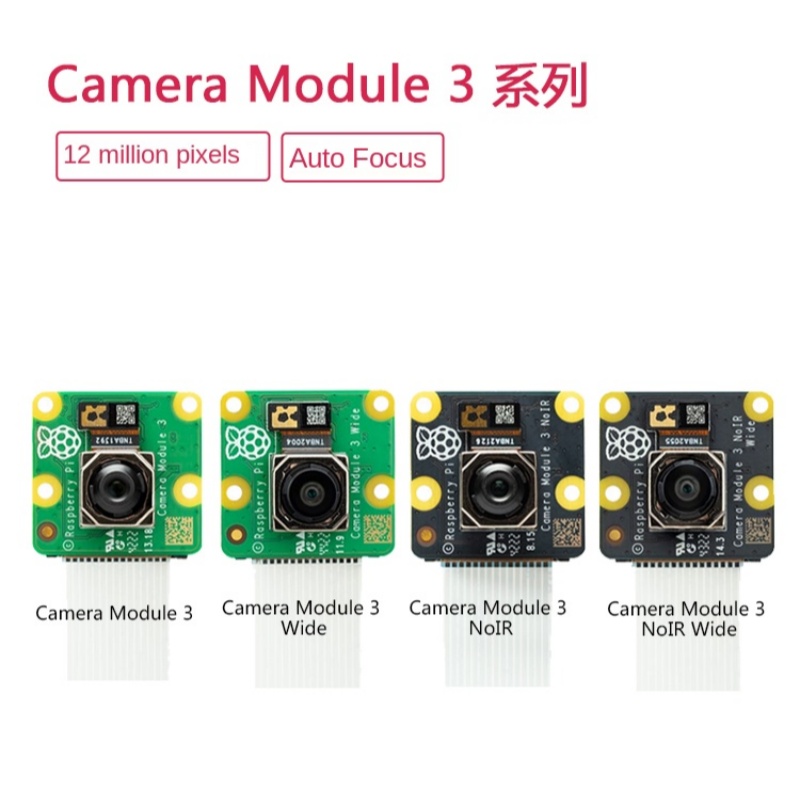Why Are Raspberry Pi Boards So Popular Among Makers and Developers?
2024-12-19
When it comes to single-board computers (SBCs), the Raspberry Pi has undoubtedly earned a reputation as one of the most accessible, affordable, and versatile options on the market. Whether you're a hobbyist, student, engineer, or even an entrepreneur, Raspberry Pi boards have become a go-to choice for a wide range of projects. But what exactly makes these small, compact boards so popular, and why are they a favorite among makers, educators, and developers alike?
In this blog, we’ll dive into the reasons behind the enduring popularity of Raspberry Pi boards, exploring their key features, use cases, and why they’ve earned such a dedicated following.
What Is a Raspberry Pi Board?
A Raspberry Pi board is a low-cost, credit-card-sized computer developed by the Raspberry Pi Foundation, designed to promote computer science education and to encourage experimentation with hardware and software. Despite its small size, it packs enough power to run various operating systems, from Linux distributions like Raspberry Pi OS to more advanced platforms like Windows 10 IoT Core.
The boards come in several models, with varying specifications, such as the Raspberry Pi 4, Raspberry Pi 400, and the smaller Raspberry Pi Zero. These boards feature processors, RAM, HDMI ports, USB ports, GPIO (General Purpose Input/Output) pins, and other essential components to make them suitable for a wide range of applications.
Why Are Raspberry Pi Boards So Popular?
1. Affordable Price Point
One of the most attractive features of Raspberry Pi boards is their low cost. Prices range from just $5 for the Raspberry Pi Zero to around $35 for a Raspberry Pi 4 with 2GB of RAM. This affordability makes Raspberry Pi an accessible platform for hobbyists, educators, and even small businesses that want to experiment with computing without breaking the bank.
Compared to traditional desktop computers or microcontrollers, Raspberry Pi boards offer a fully functioning computer at a fraction of the price, making them ideal for a range of projects—from educational purposes to DIY electronics.
2. Versatile and Customizable
Despite their compact size, Raspberry Pi boards are incredibly versatile. They can serve as a:
- Media center: Using software like OSMC or LibreELEC, you can turn a Raspberry Pi into a home theater PC.
- IoT hub: With the addition of sensors, the Pi can be used to build connected devices for smart homes or the Internet of Things (IoT).
- Retro gaming console: By installing emulators like RetroPie, Raspberry Pi boards can run classic games from consoles such as the NES, SNES, and PlayStation.
- Web server: Pi boards can host websites or web applications with minimal power consumption.
- Robotics platform: The GPIO pins and compatibility with motor controllers make the Pi a popular choice for building robots or automated systems.
Thanks to the expansion options available—whether it’s through HATs (Hardware Attached on Top), GPIO pins, or USB peripherals—users can customize their Raspberry Pi to meet the needs of nearly any project.
3. Active Community and Extensive Resources
The Raspberry Pi Foundation has fostered a thriving community of makers, educators, and developers. This global community creates an extensive amount of documentation, tutorials, and project guides, making it easy for beginners to get started and for advanced users to find resources for more complex projects.
- Raspberry Pi forums and online communities like Reddit, StackExchange, and dedicated websites offer troubleshooting advice and project ideas.
- Countless YouTube channels and blogs are devoted to teaching people how to get the most out of their Raspberry Pi, whether they’re building a simple weather station or a custom security camera system.
- The official Raspberry Pi website also offers a wealth of learning resources, including free educational content for students and teachers.
This strong support ecosystem is one of the reasons why so many choose Raspberry Pi for their projects—it’s never hard to find help or inspiration.
4. Perfect for Learning and Education
The Raspberry Pi Foundation was originally created to support computer science education, and this mission is at the heart of the Raspberry Pi’s success. The low-cost, easy-to-use nature of the Pi makes it an excellent tool for teaching students of all ages how to code, build hardware, and experiment with technology.
- Raspberry Pi boards come with an array of pre-installed software for coding and learning, including Scratch (for beginners) and Python (for more advanced learners).
- With the GPIO pins, students can also learn how to interact with the physical world by controlling sensors, motors, lights, and more.
- Teachers and educational institutions across the world use Raspberry Pi to create interactive learning environments and encourage hands-on experiences.
The Pi helps foster creativity and problem-solving skills, making it an ideal tool for STEM education.
5. Low Power Consumption
Compared to traditional desktop PCs or even laptops, Raspberry Pi boards are extremely energy-efficient. They consume very little power—typically around 2.5 to 5 watts—making them suitable for projects where low power usage is crucial.
This low power consumption means that Raspberry Pi can run continuously for long periods without causing significant increases in energy bills, making it ideal for projects like home automation systems, servers, and IoT devices that require constant operation.
6. Compact and Portable
The small form factor of the Raspberry Pi (about the size of a credit card) makes it incredibly portable. Whether you're using it in a DIY project, taking it to a hackathon, or embedding it into a product, the compact nature of the Pi makes it easy to fit into tight spaces or integrate with other electronics.
- The Raspberry Pi Zero is even smaller than the standard Pi and is great for ultra-compact projects or low-cost, lightweight applications.
This portability opens up a wide range of use cases, from embedded systems to mobile projects that require computing power without a large physical footprint.
7. Great for Prototyping and DIY Projects
Because of its affordability, versatility, and ease of use, Raspberry Pi has become a favorite tool for prototyping. Whether you’re working on a new product or creating a proof-of-concept, the Pi provides a flexible platform to test out ideas without needing expensive hardware or custom development.
Many startups and small businesses use Raspberry Pi boards to prototype new devices and products quickly. This is especially beneficial in industries like robotics, home automation, and IoT, where experimentation and iteration are key.
8. Open-Source and Compatible with Linux
Raspberry Pi boards run on open-source software, primarily Raspberry Pi OS (previously called Raspbian), a Linux-based operating system. This makes them highly customizable and compatible with a wide range of software applications, from web servers to media players.
Since the platform is open-source, developers can modify the operating system to suit specific needs, contributing to a wide variety of use cases—from coding and robotics to running full-fledged applications.
Key Projects You Can Build with Raspberry Pi
Here are just a few examples of the many types of projects you can build with a Raspberry Pi board:
- Smart Home Hub: Integrate your lights, security cameras, and thermostat into a unified smart home system.
- Home Automation: Use sensors and actuators to automate daily tasks such as watering plants or turning off lights.
- Media Center: Turn your Raspberry Pi into a full-fledged media center with Kodi, Plex, or other software.
- Weather Station: Monitor and log environmental data such as temperature, humidity, and air pressure.
- Security Camera System: Build a custom CCTV system with motion detection and cloud storage.
Conclusion: Why Choose a Raspberry Pi Board?
So, why are Raspberry Pi boards so popular among makers and developers? It boils down to their affordability, versatility, and the support of a passionate, global community. Whether you’re building your first project or advancing an existing idea, the Raspberry Pi provides an accessible platform to create, experiment, and learn.
Whether you’re a student learning to code, a hobbyist working on a robotics project, or an entrepreneur looking to prototype a new product, Raspberry Pi boards offer the power, flexibility, and resources you need to succeed in your endeavors. So, if you haven’t yet explored the world of Raspberry Pi, now might be the perfect time to start!



